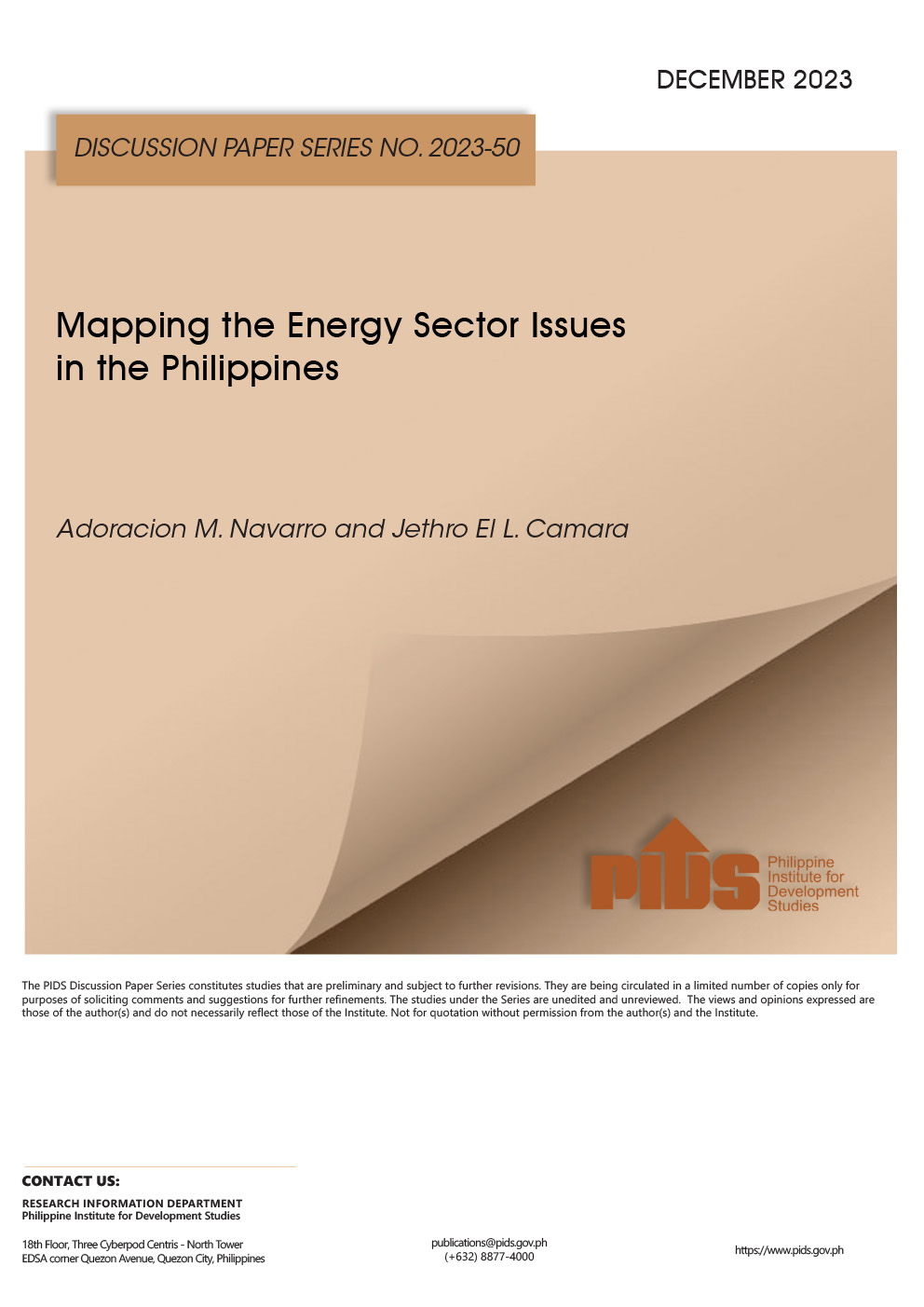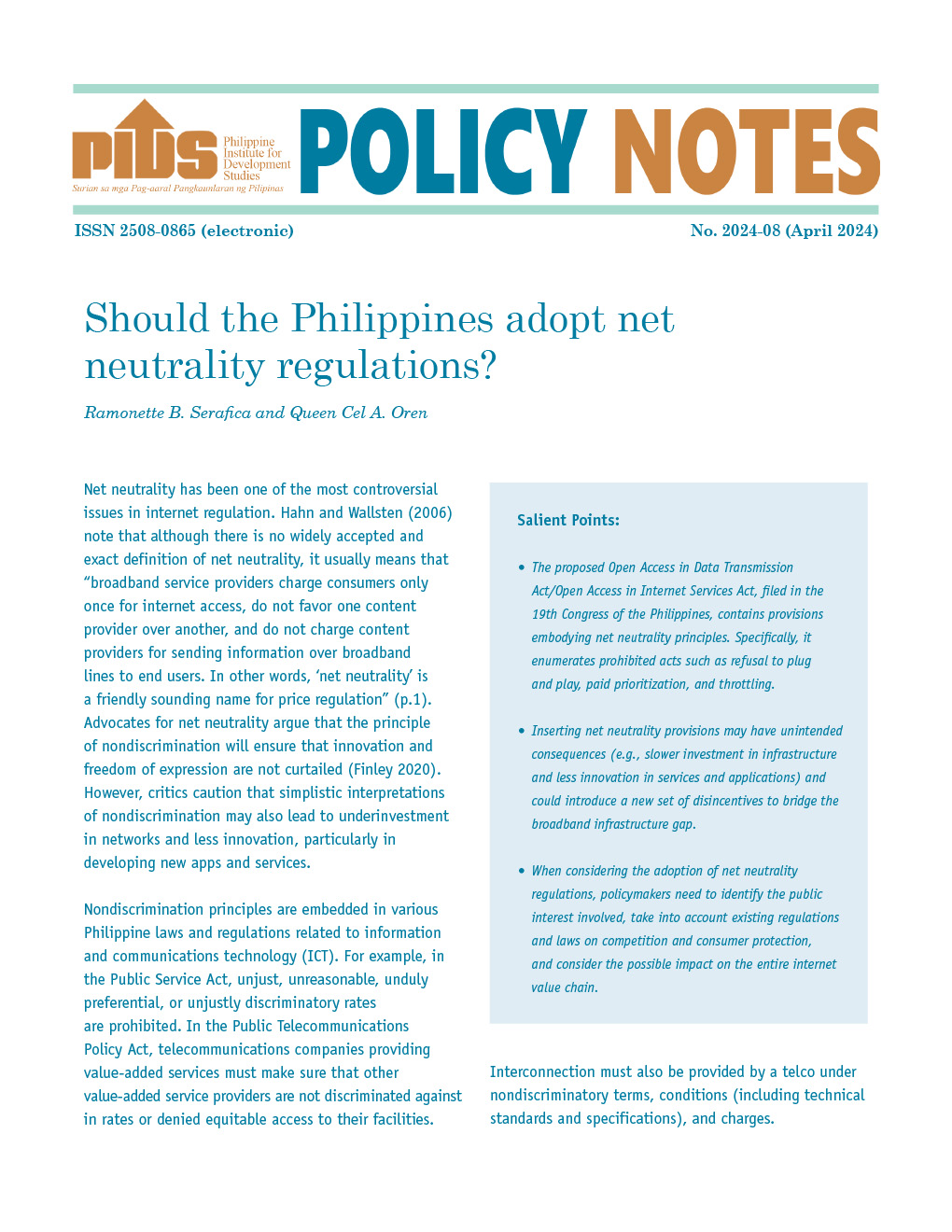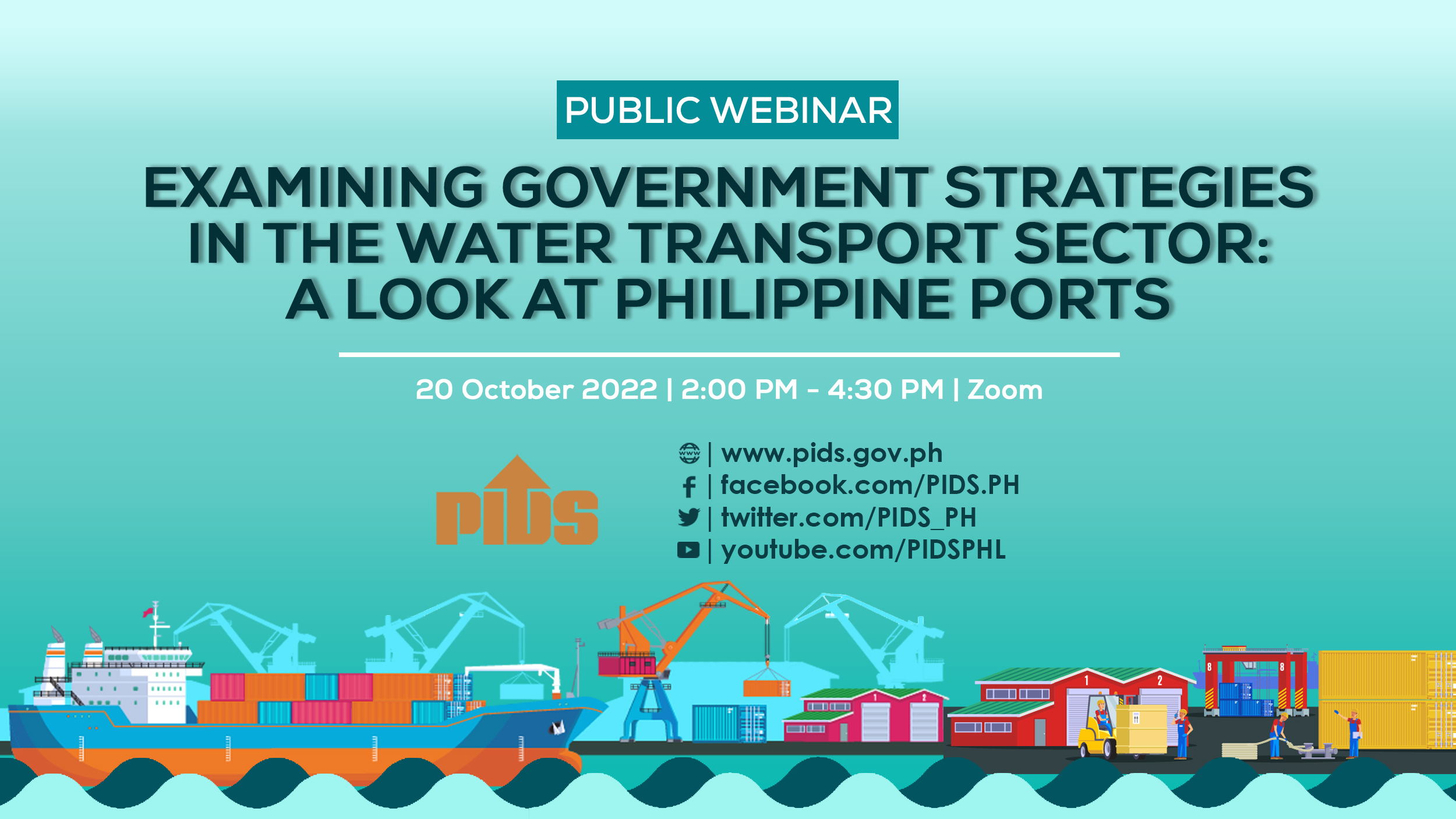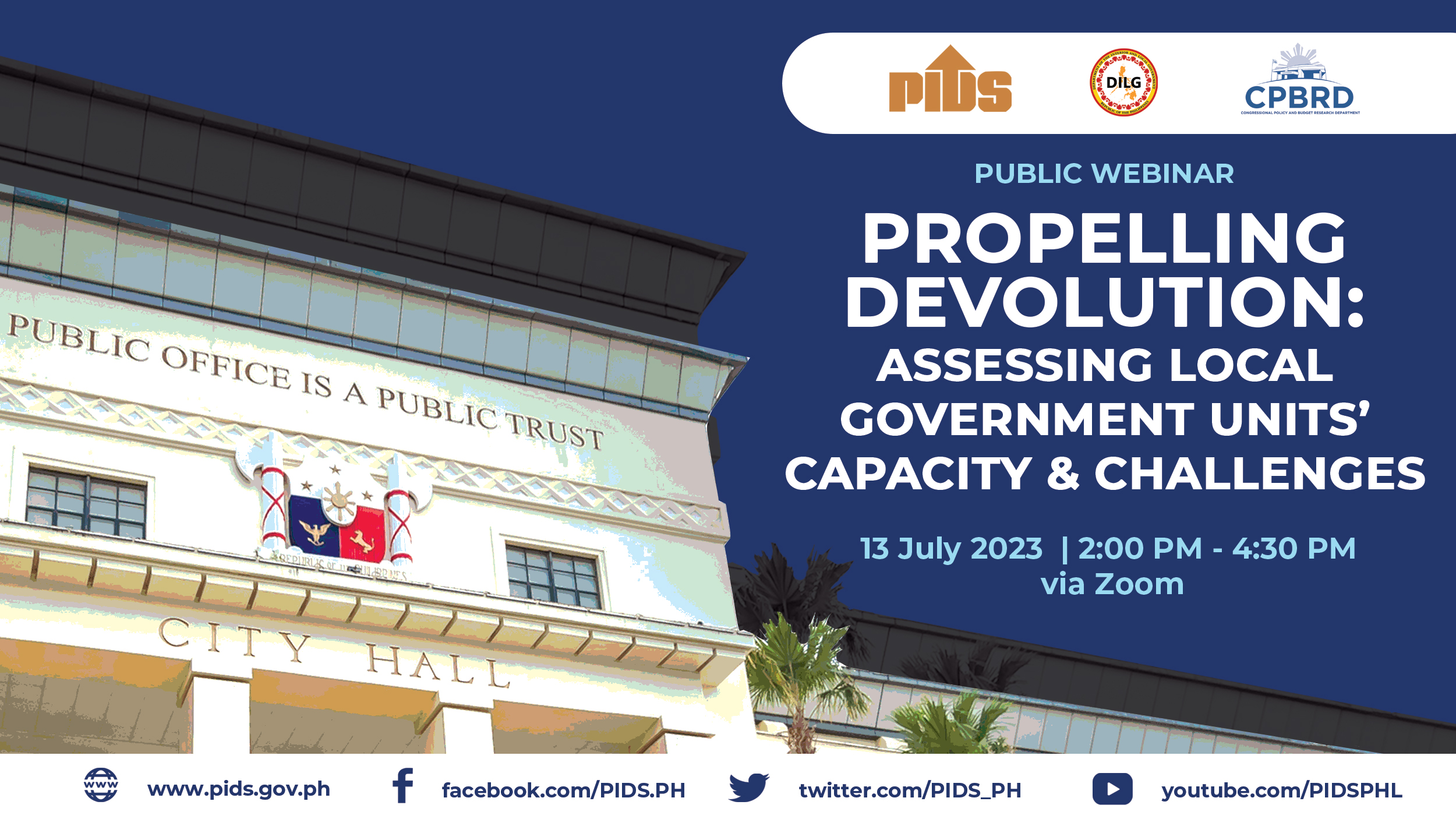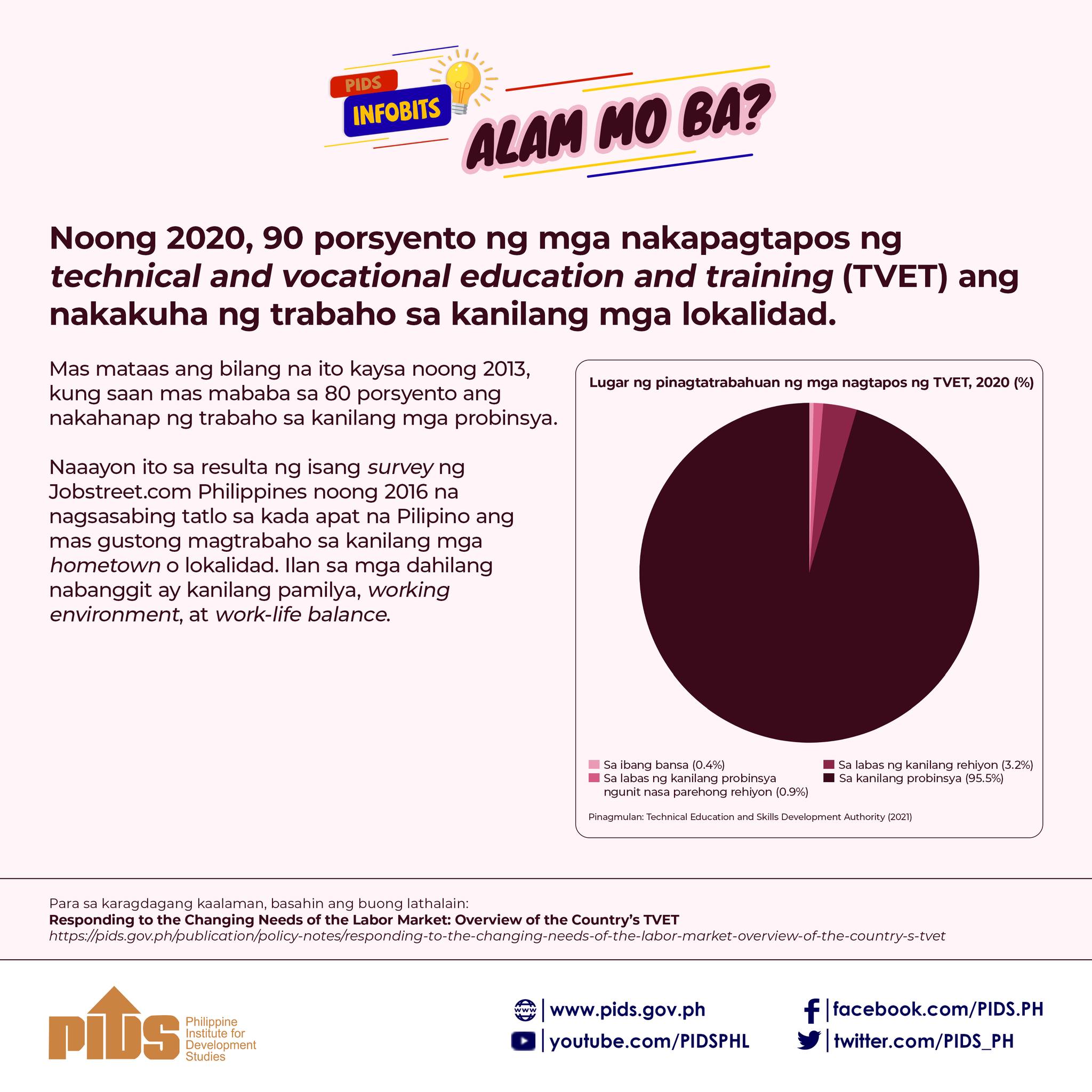The Philippines must focus its resources on upgrading the capacity, quality, and connectivity of its existing ports, according to a discussion paper by state-run think tank Philippine Institute for Development Studies (PIDS).
The discussion paper titled “Government Strategies in the Water Transport Sector: A Closer Look at Philippine Ports” by authors Kris Francisco and Valerie Lim also stressed the importance of adopting a systems approach in designing transport policies.
“Seaports do not operate in isolation; they must be well-integrated in the transport system,” the paper said.
In a PIDS webinar on October 20, Francisco said the performance of the water transport sector “greatly affects the performance of our whole economy” with almost all of the country’s domestic trade being water-borne.
She added that seaports, as the main infrastructure in the water sector, are “regarded as economic catalysts in areas where they are located as well as in peripheral areas near the port.”
Several issues and challenges, however, still affect the operations and quality of the country’s ports.
Seaports in the country are sufficient in quantity but most are underdeveloped and have inadequate equipment, Francisco noted.
The number of operational Philippine ports has grown from 1,312 in 1993 to 1,886 in 2015. Francisco said greater demand today for domestic cargo and passenger traffic was complemented by an increase in domestic ports. Moreover, the Philippines, like Indonesia, has more international seaports than other Association of Southeast Asian Nations (ASEAN) member countries owing to its archipelagic nature.
“But despite having more international seaports, unfortunately, we are trailing other ASEAN countries in terms of volume of international cargo and also international shipping containers,” Francisco said. She pointed out that Malaysia and Singapore, despite having fewer ports, handle more international cargoes and can accommodate larger vessels.
“Definitely there are a lot of factors affecting the direction of trade, but this just indicates that having more international seaports is not enough to attract maritime trade,” Francisco said.
In a survey of business executives by the World Economic Forum, the perceived quality of Philippine ports is generally low, Francisco noted. Citing various studies, she said the Philippines continues to lag other ASEAN countries in port development. Government-operated ports outside Manila need major upgrades as they usually lack cargo-handling equipment needed for an efficient supply chain.
Moreover, the connectivity of Philippine ports to global liner shipping is seen as weak, with Francisco noting that there is “definitely a huge room for improvement if we want to maximize our chances of gaining more international trade.”
Another issue is congestion in major ports, particularly in Manila, one of the top 50 busiest ports in the world according to the World Shipping Council based on 2019 data. Francisco noted the increasing cargo and passenger traffic in the Greater Capital Region is further straining Manila ports and is also affecting nearby road networks.
She said mismanagement of shipping containers as well as the lack of depot areas further exacerbate the congestion in Manila ports.
While there are initiatives to address high utilization in Manila ports by developing Batangas and Subic ports, Francisco noted that shippers still prefer the former due to “reliable shipping schedule and efficient cargo processes.”
Cargo volume in Batangas and Subic ports have notably increased over the past several years since the 2014 Manila port congestion.
Another issue, Francisco said, is the conflicting role of government agencies as operator, developer, and regulator, which impacts port competition and drives rates upward. She said this is unfavorable for the growth of the sector and there is a need to provide checks against the influence of operational interests in formulating policy regulations.
One example of conflict of interest, Francisco said, is when the ports authority gets a percentage from the profit of the operator “so, therefore, when this port operator applies for an increase in the fee, it usually gets approved, which is, of course, to the disadvantage of the users.”
She noted that various studies have recommended revisiting the functions of the Philippine Ports Authority (PPA) and giving the development and operations functions to a private sector or establish a separate entity to regulate ports. Another recommendation is, instead of collecting fees, the government can lease port facilities to terminal operators to induce competition and encourage them to improve services.
Another issue is the lack of nationwide coordination in port planning.
Francisco said the main challenge is there is no institutional anchoring for overall integrated planning for multimodal transport. She added that the inefficiency of the national port network as well as the imbalance of port investment can be attributed to the lack of nationwide coordination in port planning as port development bodies work independently.
In the Philippines, the PPA manages and operates the majority of ports in the country, but there are also several independent port authorities and local government units handling several other ports.
Moreover, Francisco said there is a need to strengthen data reporting to be used for effective national port system planning.
There is also an urgent need to pass a law adopting the National Transport Policy – crafted by the National Economic and Development Authority and published in 2018 – to ensure coordinated planning and efficient functioning of the whole transport system.

